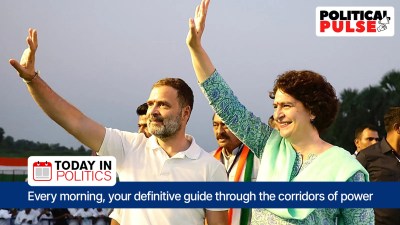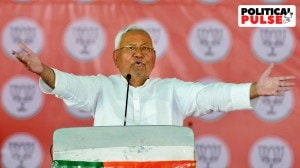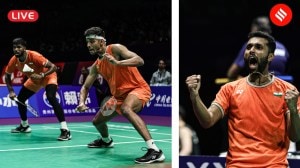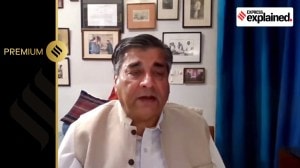- India
- International
From the Urdu Press: ‘Congress’s prudent new strategy against BJP’, ‘MVA steals march over Mahayuti in seat-sharing deal’
'Naveen Patnaik-led BJD has again quietly nominated 33% women candidates... their winnability in 2019 proved that women would not lag behind men even in electoral battles,' writes Roznama Rashtriya Sahara
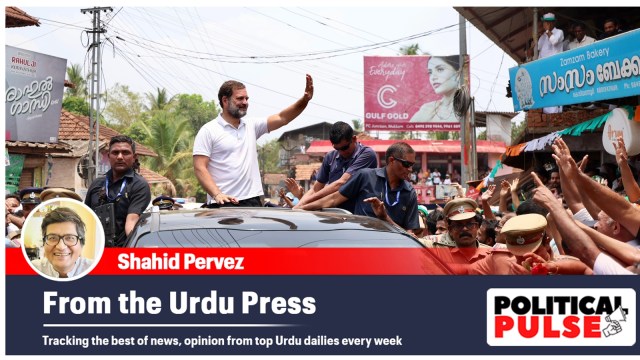 Congress leader Rahul Gandhi campaigning in Kerala's Kozhikode, ahead of the Lok Sabha elections. (Photo: Congress/ X)
Congress leader Rahul Gandhi campaigning in Kerala's Kozhikode, ahead of the Lok Sabha elections. (Photo: Congress/ X)With barely three days left for the first round of the seven-phase Lok Sabha elections to get underway, campaigning by all the contenders in the fray has reached a crescendo. The Urdu dailies have kept their focus on the poll coverage from across the country, highlighting that the outcome of the direct face-offs between the incumbent BJP and the Congress, the largest player of the Opposition INDIA bloc, in about 190 seats will essentially shape the narrative of the 2024 grand battle.
INQUILAB
Underlining the significance of direct fights between the Congress and the BJP in the Lok Sabha polls, the New Delhi edition of Inquilab, in its leader on April 14, says the Congress has been in the BJP’s crosshairs since 2014. “Its top brass was attacked, its state governments were toppled or disrupted, its leaders were targeted by agencies, its sitting or ex-legislators were lured or pressured and were rewarded upon defection, Rahul Gandhi was disqualified from Parliament, and the party’s bank accounts were frozen,” the daily writes. These attempts were mounted to cripple the grand old party, which still has its units and bases throughout the country after having been in power for most of the years since Independence.
“The BJP gave the slogan ‘Congress-mukt Bharat (Congress-free India)’, singling it out as its principal rival as the party is aware that regional parties cannot challenge it nationally and that it could deal with them easily in due course when required,” the editorial says. “If one looks at the BJP’s current election rallies, especially the speeches delivered by PM Modi, it is evident that the Congress remains their main target. It begs the question, does the Congress still pose a threat to the BJP?”
The answer to this question could be in the negative, given the current state of the Congress, but the situation may also change, the editorial says. “Significantly, the Congress faces off the BJP directly in over 35% Lok Sabha seats. In the polls in 2014 and 2019, there were about 186 seats where the two parties were locked in direct contests. In 2014, the Congress could win 24 of these seats, while in 2019 its performance was even worse as it managed to pick just 15 seats.”
This time, the Congress, keeping in view its depleted resources, seems be focusing on only those seats where it could put up a fight. “The Congress has tactically decided to leave other seats for its INDIA allies, ceding space to them in areas where they are in a better position to lock horns with the BJP,” the edit notes. “This is a prudent strategy even if the national media continue to show the Congress in a bad light.”

SALAR
Referring to the seat-sharing agreement of Maharashtra’s Opposition Maha Vikas Aghadi (MVA) after weeks of negotiations and bargaining, the Bengaluru-based Salar says that the Uddhav Thackeray-led Shiv Sena (UBT) has got the upper hand as it will contest 21 of the state’s 48 Lok Sabha seats while the Congress and Sharad Pawar-led NCP (SP) will fight from 17 and 10 constituencies respectively. “Interestingly, the BJP-led NDA does not seem to be as cohesive and organised in Maharashtra as it is in other states, given that the ruling Mahayuti comprising the BJP, Chief Minister Eknath Shinde-headed Shiv Sena, and Ajit Pawar-led NCP have still not been able to finalise their seat-sharing deal due to differences over several seats,” it states.
To hammer out a consensus for their pact, the MVA partners displayed flexibility and understanding, focusing on their larger objective of taking on the Mahayuti coalition, the editorial says, adding that the Congress had to leave its claims over three seats — Sangli, Bhiwandi and Mumbai South Central — for its allies. “It is to be seen how effective the Opposition alliance proves to be in its battle with the NDA in the crucial state.”
The edit points out that all eyes are on Maharashtra, which accounts for 48 seats, the second highest after Uttar Pradesh. “Because of the splits in the Shiv Sena and the NCP with their breakaway factions affiliated to the rival camps, the Maharashtra scenario has turned complex and unpredictable which would only be clarified by the poll results,” it states, adding that their vote transfers would also be closely tracked.
The daily writes that the traditional character of Maharashtra politics is also at stake. “Some of the parties and leaders, who have always dominated the state’s political scene have been struggling at the levels of their organisation as well as families. The Opposition bloc blames the BJP for causing such disruptions, which rejects it while accusing them of indulging in dynasty politics,” it says. “The election outcome will also determine whether big players like Sharad Pawar and Uddhav Thackeray would be able to continue their dominance in state politics or it would mark the beginning of their decline.”
ROZNAMA RASHTRIYA SAHARA
Flagging the low percentage of women candidates in the Lok Sabha elections, the multi-edition Roznama Rashtriya Sahara, in its editorial on April 14, says that despite the platitudes issued by the political parties for ensuring adequate representation for women in the legislatures, their records on this score in the Lok Sabha elections are not up to the mark. (The women’s reservation Bill providing for 33% reservation for women in the Lok Sabha and the Assemblies was passed by both Houses of Parliament in September last year, which will however only be implemented following a fresh Census and the delimitation exercise.)
The daily writes that the Naveen Patnaik-led Biju Janata Dal (BJD) had not boasted about its commitment to women empowerment but it has again quietly nominated 33% women candidates by fielding 7 women nominees out of the state’s total 21 seats. “In the 2019 polls too, the BJD had fielded 7 women candidates, of whom five won,” it says, adding that their “winnability” proved that women candidates would not lag behind their male counterparts even in electoral battles.
In contrast, the percentage of women candidates fielded by the national parties like the BJP and the Congress have been significantly lower, the editorial notes. “The ruling BJP has nominated 68 women out of 417 candidates it has declared so far, which comes to just a little over 16%. It is however better than 53 women out of 437 candidates the party had put in the fray in 2019, which came to 12%,” it says, claiming that the Congress has fielded about 20% women nominees so far. The Mamata Banerjee-led Trinamool Congress (TMC) had fielded about 40% women candidates (17 out of total 42) in West Bengal in 2019, although this time it has given ticket to 12 women nominees (about 29%). Even Lalu Prasad-led RJD has nominated 6 women candidates in Bihar (out of 23 seats it is contesting), which comes to about 26%, most of whom are poll debutants, the edit says. It is high time that all the parties must give equal representation to women in elections as per their equal share in population, it adds.
May 02: Latest News
- 01
- 02
- 03
- 04
- 05


